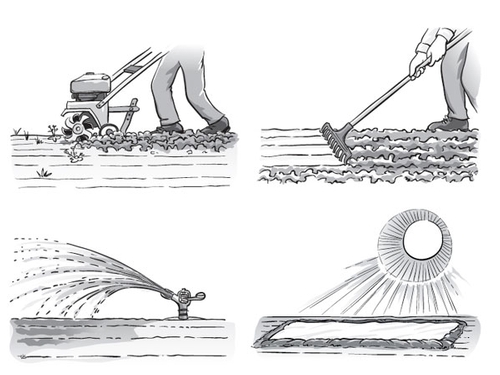Looking for an environmentally safe way to control soilborne pests? Solarization is a nonchemical method that can be successfully used to kill weeds, pathogens, nematodes and insects.
This process heats the soil to temperatures that are too high for the undesirable organisms to live. It also has the potential to improve soil structure, increasing the potential for healthy plants. Faster growing plants as well as higher and better quality yields are associated with solarized soil.
Another benefit of this method of soil preparation is that it can be used by home gardeners, landscape professionals, natural resource restoration projects and in production agriculture.
More information can be found in UC ANR’s Soil Solarization for Gardens and Landscapes pest note or for a more in-depth view and closely related subjects, please visit UC’s Solarization Informational Website.

Illustration by W. Suckow showing solarization steps.
- alternative fumigants
- commercial agriculture
- disease
- food safety
- home gardening
- Initiative B Abundant Food
- Initiative C Sharing Science
- Initiative D Sustaining Ecosystems
- Initiative F Families and Communities
- Initiative H Managing Pests
- Initiative I Energy for the Future
- invasive species
- landscape professionals
- natural resources
- nursery production
- organic gardening
- organic production
- pests
- soil
- weed management